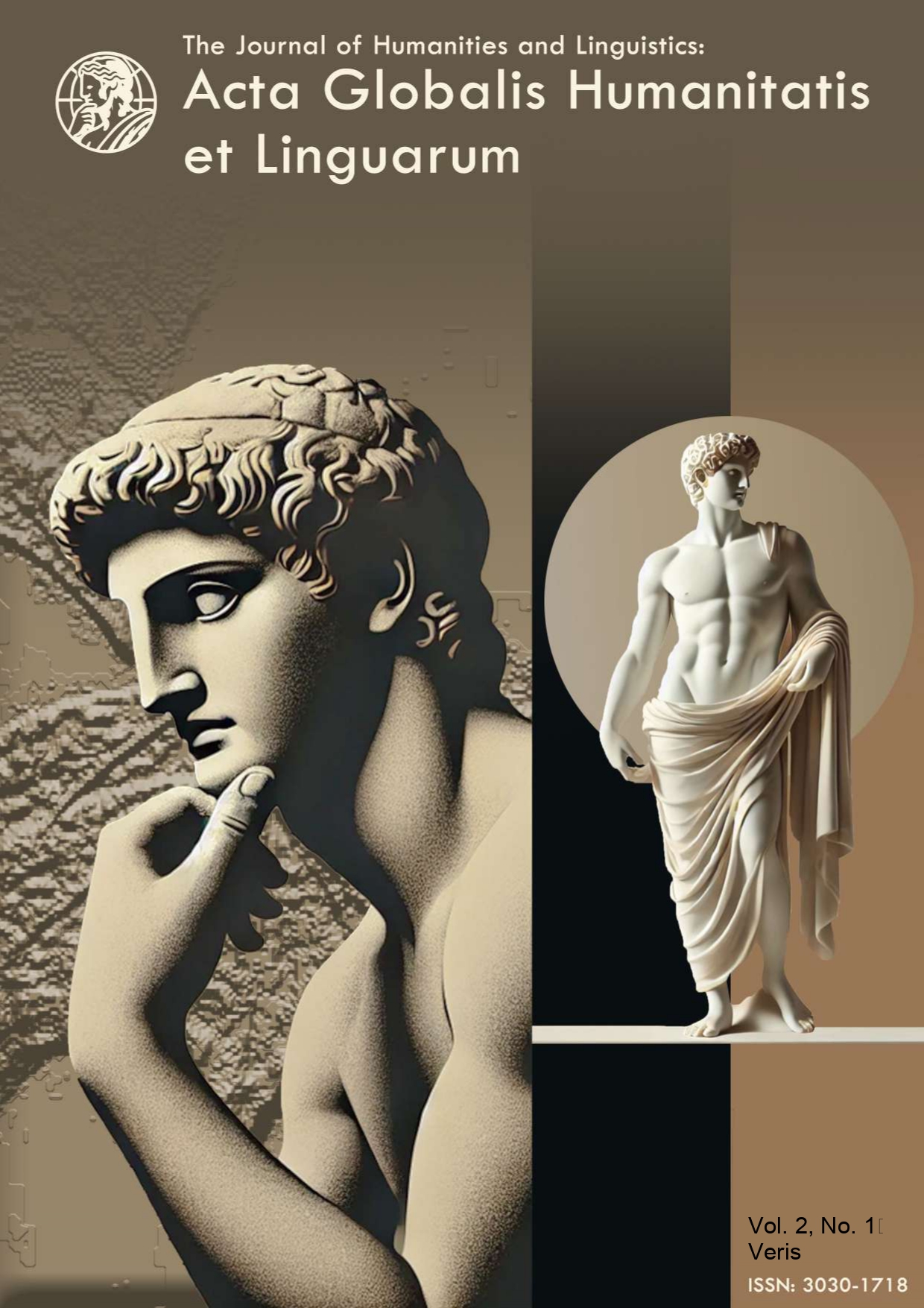Managing and Controlling Innovation in the 21st Century Using Artificial Intelligence
DOI :
https://doi.org/10.69760/aghel.025002102Mots-clés :
Artificial İntelligence, Innovation, Innovation Management, İnformation ProcessingRésumé
Artificial intelligence (AI) is changing companies and how they organize innovation management. In line with the rapid development of technology and the replacement of human organizations, AI may actually force management to rethink the entire innovation process of a company. In response, we explore the implications for future innovation management.
Using ideas from the Carnegie School and the behavioral theory of the firm, we examine the implications for innovation management of AI technologies and AI systems based on machine learning. We outline a framework that shows to what extent AI can replace humans and explain what needs to be considered in transforming the digital innovation organization. We conclude our study by exploring future research directions.
Références
Adner, R., Puranam, P., Zhu, F., 2019. What is different about digital strategy? Fromquantitative to qualitative change. Strateg. Sci. 1–22. https://doi.org/10.1287/stsc.2019.0099.
Agrawal, A., Gans, J., Goldfarb, A., 2018a. Exploring the impact of artificial intelligence:prediction versus judgment (No. 24626). In: NBER Working Paper, NBER WorkingPaper. Cambridge, MA. . https://doi.org/10.3386/w24626.
Agrawal, A., Gans, J., Goldfarb, A., 2018b. Prediction Machines: The Simple Economics ofArtificial Intelligence. Harvard Business Review Press, Cambridge, MA.
Amabile, T., 2019. Creativity, artificial Intelligence, and a world of surprises. Acad.Manag. Discov amd.2019.0075. https://doi.org/10.5465/amd.2019.0075.
Argote, L., Greve, H.R., 2007. A Behavioral Theory of the Firm —40 years and counting:introduction and impact. Organ. Sci. 18, 337–349. https://doi.org/10.1287/orsc.1070.0280.
Augier, M., Prietula, M., 2007. Historical roots of the “A Behavioral Theory of the Firm”model at GSIA. Organ. Sci. 18, 507–522. https://doi.org/10.1287/orsc.1070.0276.
Autodesk, 2016. Airbus: reimagining the future of air travel [WWW Document]. AutodeskURL. http://www.autodesk.com/customer-stories/airbus (accessed 1.29.19).
Bettis, R.A., Hu, S., 2018. Bounded rationality, heuristics, computational complexity, andartificial intelligence. Adv. Strateg. Manag. 39, 139–150. https://doi.org/10.1108/S0742-332220180000039010.
Brynjolfsson, E., McAfee, A., 2017. The business of artificial intelligence: what it can –and cannot – do for your organization. Harv. Bus. Rev. Jul 10.
Bughin, J., Hazan, E., Ramaswamy, S., Chui, M., Allas, T., Dahlstrِ m, P., Henke, N.,Trench, M., 2017. Artificial intelligence: The next digital frontier? McKinsey GlobalInst. https://www.mckinsey.com/~/media/mckinsey/industries/advanced
Byrnes, S., 2018. The importance of having an AI-powered business strategy. Forbes.https://www.mckinsey.com/featured-insights/artificial-intelligence/ai-adoptionadvances-but-foundational-barriers-remain.
N. Haefner, et al. Technological Forecasting & Social Change 162 (2021) 1203928cbinsights.com/research/ai-trends-2019/.
Charington, S., 2018. AI For Materials Discovery with Greg Mulholland. URL. https://twimlai.com/twiml-talk-148-ai-for-materials-discoverywith-greg-mulholland/.
Charrington, S., 2019. Trends in reinforcement learning with Simon Osindero. This Week Mach. Learn. Artifcial Intell. Pod URL. https://twimlai.com/twiml-talk-217-trends-in-reinforcement-learning-with-simon-osindero/ (accessed1.3.19).
Chui, M., Henke, N., Miremadi, M., 2018. Most of AI’s business uses will be in two areas.Harv. Bus. Rev. 3–7. https://hbr.org/2018/07/most-of-ais-business-uses-will-be-intwo-areas.
Chui, M., Malhotra, S., 2018. Notes from the AI frontier: AI adoption advances, butfoundational barriers remain. McKinsey Analytics. https://www.mckinsey.com/featured-insights/artificial-intelligence/ai-adoption-advances-but-foundationalbarriers-remain.
Cooper, R.G., Edgett, S.J., Kleinschmidt, E.J., 1997. Portfolio management in new productdevelopment: lessons from the leaders—I. Res. Manag. 40, 16–28. https://doi.org/10.1080/08956308.1997.11671152.
Cotta, C., Troya, J.M., 1998. A hybrid genetic algorithm for the 0–1 multiple knapsack problem. Artificial Neural Nets and Genetic Algorithms. Springer, Vienna, pp.250–254. https://doi.org/10.1007/978-3-7091-6492-1_55.
Cyert, R., March, J.G., 1963. A Behavioral Theory of the Firm. Prentice-Hall, Englewood Cliffs, NJ.
Daugherty, P., Wilson, H.J., 2018. Human + Machine: Reimagining Work in the Age ofAI. Harvard Business Review Press, Boston.
EconSight, 2019. Artificial intelligence: Global developments, fields of application, drivers of innovation and world-class research. EconSight, Basel. https://www.econsight.ch/en/econsight-artificial-intelligence/.
Eggers, J.P., Kaplan, S., 2009. Cognition and renewal: comparing CEO and organizational effects on incumbent adaptation to technical change. Organ. Sci. 20, 461–477. https://doi.org/10.1287/orsc.1080.0401.
Elgammal, A., Liu, B., Elhoseiny, M., Mazzone, M., 2017. CAN: creative adversarial networksgenerating “art” by learning about styles and deviating from style norms.arXiv:1706.07068, 1–22.
Furman, J.L., Teodoridis, F., 2020. Automation, research technology, and researchers’trajectories: evidence from computer science and electrical engineering. Organ. Sci.31, 330–354. https://doi.org/10.1287/orsc.2019.1308.
Gary, M.S., 2005. Implementation strategy and performance outcomes in related diversification.
Strateg. Manag. J. 26, 643–664. https://doi.org/10.1002/smj.468.
Gavetti, G., Greve, H.R., Levinthal, D.A., Ocasio, W., 2012. The behavioral theory of thefirm: assessment and prospects. Acad. Manag. Ann. 6, 1–40. https://doi.org/10.1080/19416520.2012.656841.
Gavetti, G., Levinthal, D., 2000. Looking forward and looking backward: cognitive andexperiential search. Adm. Sci. Q. 45, 113. https://doi.org/10.2307/2666981.
Garibli, I. (2025). Claims in Civil Cases Considered by the Courts. Global Spectrum of Research and Humanities , 2(2), 113-122. https://doi.org/10.69760/gsrh.010120250039
George, G., Haas, M.R., Pentland, A., 2014. Big data and management. Acad. Manag. J.57, 321–326. https://doi.org/10.5465/amj.2014.4002.
Geyer-Klingeberg, J., Nakladal, J., Baldauf, F., Veit, F., 2018. Process mining and roboticprocess automation: a perfect match. In: Proceedings of the Dissertation Award,Demonstration, and Industrial Track at Business Process Management 2018. Sydney.pp. 124–131.
Glikson, E., Woolley, A.W., 2020. Human trust in artificial intelligence: review of empiricalresearch. Acad. Manag. Ann. 14, 627–660.https://doi.org/10.5465/annals.2018.0057.
Goldfarb, A., Taska, B., Teodoridis, F., 2020. Artificial intelligence in health care?Evidence from online job postings. AEA Pap. Proc 110, 400–404. https://doi.org/10.1257/pandp.20201006.
Goodfellow, I., Bengio, Y., Courville, A., 2016. Deep Learning. MIT Press, Boston.
Groves, P., Kayyali, B., Knott, D., van Kuiken, S., 2013. The “big data” Revolution inHealthcare [WWW Document]. McKinsey Co. URL.
Gupta, A., Mendonca, R., Liu, Y., Abbeel, P., Levine, S., 2018. Meta-reinforcementlearning of structured exploration strategies. arXiv:1802.07245, 11.
Hajli, N., Featherman, M.S., 2018. The impact of new ICT technologies and its applications on health service development and management. Technol. Forecast. Soc.
Change 126, 1–2. https://doi.org/10.1016/j.techfore.2017.09.015.
Hao, K., 2018. AI in China: how Uber rival Didi Chuxing uses machine learning to revolutionize transportation. MIT Technol. Rev.
Hill, C.W.L., Hoskisson, R.E., 1987. Strategy and structure in the multiproduct firm. Acad.Manag. Rev. 12, 331–341. https://doi.org/10.5465/amr.1987.4307949.
Johansen, N., Quon, G., 2018. scAlign: a tool for alignment, integration and rare cellidentification from scRNA-seq data, bioRxiv. https://doi.org/10.1101/504944.
Jones, J.N., Cope, J., Kintz, A., 2016. Peering into the future of innovation management.Res. Manag. 59, 49–58. https://doi.org/10.1080/08956308.2016.1185344.
Katila, R., Ahuja, G., 2002. Something old, something new: a longitudinal study of searchbehavior and new product introduction. Acad. Manag. J. 45, 1183–1194. https://doi.org/10.5465/3069433.
Kijkuit, B., van den Ende, J., 2007. The organizational life of an idea: integrating socialnetwork, creativity and decision-making perspectives. J. Manag. Stud. 44, 863–882.https://doi.org/10.1111/j.1467-6486.2007.00695.x.
Krakowski, S.M., Haftor, D., Luger, J., Pashkevich, N., Raisch, S., 2019. Humans andalgorithms in organizational decision making: evidence from a field experiment. In:Academy of Management Proceedings. Boston, MA. . https://doi.org/10.5465/AMBPP.2019.16633abstract.
Lanzolla, G., Lorenz, A., Miron-Spektor, E., Schilling, M., Solinas, G., Tucci, C., 2018.Digital transformation: what is new if anything? Acad. Manag. Discov 4, 378–387.https://doi.org/10.5465/amd.2018.0103.
Lengnick-Hall, C.A., 1992. Innovation and competitive advantage: what we know andwhat we need to learn. J. Manage. 18, 399–429. https://doi.org/10.1177/014920639201800209.
Lenka, S., Parida, V., Wincent, J., 2017. Digitalization capabilities as enablers of value cocreationin servitizing firms. Psychol. Mark. 34, 92–100. https://doi.org/10.1002/mar.20975.
Lin, K., Zhao, R., Xu, Z., Zhou, J., 2018. Efficient large-scale fleet management via multiagent deep reinforcement learning. arXiv:1802.06444, 10.
Lu, Y., 2019. Artificial intelligence: a survey on evolution, models, applications and futuretrends. J. Manag. Anal. 6, 1–29. https://doi.org/10.1080/23270012.2019.1570365.
Mamoshina, P., Vieira, A., Putin, E., Zhavoronkov, A., 2016. Applications of deep learning in biomedicine. Mol. Pharm. 13, 1445–1454. https://doi.org/10.1021/acs.molpharmaceut.5b00982.
Martin, L., Wilson, N., 2016. Opportunity, discovery and creativity: a critical realistperspective. Int. Small Bus. J. Res. Entrep. 34, 261–275. https://doi.org/10.1177/0266242614551185.
McNally, R.C., Schmidt, J.B., 2011. From the special issue editors: an introduction to the special issue on decision making in new product development and innovation. J.
Prod. Innov. Manag. 28, 619–622. https://doi.org/10.1111/j.1540-5885.2011.00843.x.
Munos, B., 2009. Lessons from 60 years of pharmaceutical innovation. Nat. Rev. Drug Discov. 8, 959–968. https://doi.org/10.1038/nrd2961.
Nelson, R.R., Winter, S.G., 1982. An Evolutionary Theory of Economic Change. HarvardUniversity Press, Cambridge, MA. https://doi.org/10.1017/CBO9781107415324.004.
Newell, A., Simon, H.A., 1972. Human Problem Solving. Prentice-Hall, EnglewoodCliffs, NJ.
Ng, A., 2017. Artificial Intelligence is the New Electricity.O'Cass, A., Wetzels, M., 2018. Contemporary issues and critical challenges on innovationin services. J. Prod. Innov. Manag. 35, 674–681. https://doi.org/10.1111/jpim.12464.
Pammolli, F., Magazzini, L., Riccaboni, M., 2011. The productivity crisis in pharmaceuticalR&D. Nat. Rev. Drug Discov. 10, 428–438. https://doi.org/10.1038/nrd3405.
Parloff, R., 2016. Why deep learning is suddenly changing your life. Fortune. http://fortune.com/ai-artificial-intelligence-deep-machine-learning/.
Piezunka, H., Aggarwal, V.A., Posen, H.E., 2019. Learning-by-participating: the dynamicsof information aggregation in organizations. INSEAD Working Papers Collection.https://doi.org/10.2139/ssrn.3425696.
Porter, M.E., Stern, S., 2001. Innovation: location matters. MIT Sloan Manag. Rev. 42,28–36.
Posen, H.E., Keil, T., Kim, S., Meissner, F.D., 2018. Renewing research on problemisticsearch—A review and research agenda. Acad. Manag. Ann. 12, 208–251. https://doi.org/10.5465/annals.2016.0018.
Prahalad, C.K., Bettis, R.A., 1986. The dominant logic: a new linkage between diversity and performance. Strateg. Manag. J. 7, 485–501. https://doi.org/10.1002/smj.4250070602.
Puranam, P., Shrestha, Y.R., He, V.F., von Krogh, G., 2018. Algorithmic induction through machine learning: using predictions to theorize. INSEAD Work. Pap. Collect 1–33. https://doi.org/10.2139/ssrn.3140617.
Puranam, P., Stieglitz, N., Osman, M., Pillutla, M.M., 2015. Modelling bounded rationalityin organizations: progress and prospects. Acad. Manag. Ann. 9, 337–392. https://doi.org/10.1080/19416520.2015.1024498.
Qin, Z.T., Tang, J., Ye, J., 2019. Deep reinforcement learning with applications in transportation. In: 33rd AAAI Conf. Artif. Intell.
Raisch, S., Krakowski, S.,. Artificial intelligence and management: the automation-augmentationparadox. Acad. Manag. Rev. https://doi.org/10.5465/2018.0072.
Ransbotham, S., Kiron, D., Gerbert, P., Reeves, M., 2017. Reshaping business with artificial intelligence. MIT Sloan Mangement Rev 59, 1–17.
Restrepo, J., Christiaans, H., 2004. Problem structuring and information access in design.
J. Des. Res. 4, 218–236. https://doi.org/10.1504/JDR.2004.009842.
Rhodes, M., 2015. Airbus’ newest design is based on bones and slime mold. Wired.https://www.wired.com/2015/12/airbuss-newest-design-is-based-on-slime-moldand-bones/.
Roose, K., 2019. The hidden automation agenda of the Davos elite. New York Times B1.https://www.google.com/url?sa=t&rct=j&q=&esrc=s&source=web&cd=&cad=rja&uact=8&ved=2ahUKEwjd64-Ys7LsAhUNCxoKHZblAS4QFjAAegQIBhAC&url=
https%3A%2F%2Fwww.nytimes.com%2F2019%2F01%2F25%2Ftechnology%2Fautomation-davos-world-economic-forum.html.
Samuel, A.L., 1959. Some studies in machine learning using the game of checkers. IBM J.Res. Dev. 3, 210–229. https://doi.org/10.1147/rd.33.0210.
Sbai, O., Elhoseiny, M., Bordes, A., LeCun, Y., Couprie, C., 2018. DeSIGN: design inspirationfrom generative networks, in: 15th European Conference on ComputerVision. ECCV 2018. Munich 37–44. https://doi.org/10.1007/978-3-030-11015-4_5.
Schilling, M.A., 2017. Strategic Management of Technological Innovation, 5th ed.McGraw-Hill Education, New York, NY.
Schuhmacher, A., Gatto, A., Hinder, M., Kuss, M., Gassmann, O.,. The upside of being adigital pharma player. Drug Discov. Today 6. https://doi.org/10.1016/j.drudis.2020.06.002.
Schwab, K., 2018. A Google intern built the AI behind these shockingly good fake images[WWW Document]. Fast Co URL. https://www.fastcompany.com/90244767/seethe-shockingly-realistic-images-made-by-googles-new-ai (accessed 1.31.19).
Shane, S.A., 2003. A General Theory of Entrepreneurship: The Individual-OpportunityNexus. Edward Elgar, Cheltenham.
Simon, H.A., 1996. The Sciences of the Artificial, 3rd ed. MIT Press, Cambridge, MA.
Spieth, P., Schneckenberg, D., Ricart, J.E., 2014. Business model innovation - State of theN.
Haefner, et al. Technological Forecasting & Social Change 162 (2021) 1203929 art and future challenges for the field. R&D Manag 44, 237–247. https://doi.org/10.1111/radm.12071.
Teece, D.J., 1980. Economies of scope and the scope of the enterprise. J. Econ. Behav.
Organ. 1, 223–247. https://doi.org/10.1016/0167-2681(80)90002-5.
Tran, K., Ulissi, Z.W., 2018. Active learning across intermetallics to guide discovery ofelectrocatalysts for CO2 reduction and H2 evolution. Nat. Catal. 1, 696–703. https://doi.org/10.1038/s41929-018-0142-1.
Tshitoyan, V., Dagdelen, J., Weston, L., Dunn, A., Rong, Z., Kononova, O., Persson, K.A.,Ceder, G., Jain, A., 2019. Unsupervised word embeddings capture latent knowledgefrom materials science literature. Nature 571, 95–98. https://doi.org/10.1038/s41586-019-1335-8.
Unemyr, M., 2018. Monitor business data for anomalies with AI [WWW Document].Magnus Unemyr URL. https://unemyr.com/ai-business-data-outlier/ (accessed1.29.19(.
van Riel, A.C.R., Lemmink, J., Ouwersloot, H., 2004. High-technology service innovation success: a decision-making perspective. J. Prod. Innov. Manag. 21, 348–359. https://doi.org/10.1111/j.0737-6782.2004.00087.x.
Varian, H., 2018. Artificial intelligence, economics, and industrial organization (No.24839). In: NBER Working Paper, NBER Working Paper Series. Cambridge, MA.
Veit, F., Geyer-Klingeberg, J., Madrzak, J., Haug, M., Thomson, J., 2017. The proactiveinsights engine: process mining meets machine learning and artificial intelligence. In:Proceedings of the BPM Demo Track and Business Process Management DissertationAward, pp. 1–5.
von Krogh, G., 2018. Artificial intelligence in organizations: new opportunities for phenomenon-قbased theorizing. Acad. Manag. Discov. 4, 404–409. https://doi.org/10.5465/amd.2018.0084.
Wamba, S.F., Gunasekaran, A., Akter, S., Ren, S.J.-F., Dubey, R., Childe, S.J., 2017. Big data analytics and firm performance: effects of dynamic capabilities. J. Bus. Res. 70,356–365. https://doi.org/10.1016/j.jbusres.2016.08.009.
Ward, M.J., Marsolo, K.A., Froehle, C.M., 2014. Applications for business analytics in healthcare. Bus. Horiz. 57, 571–582. https://doi.org/10.1016/j.bushor.2014.06.003.
Téléchargements
Publié
Numéro
Rubrique
Licence
© Acta Globalis Humanitatis et Linguarum 2025

Cette œuvre est sous licence Creative Commons Attribution - Pas d'Utilisation Commerciale 4.0 International.







